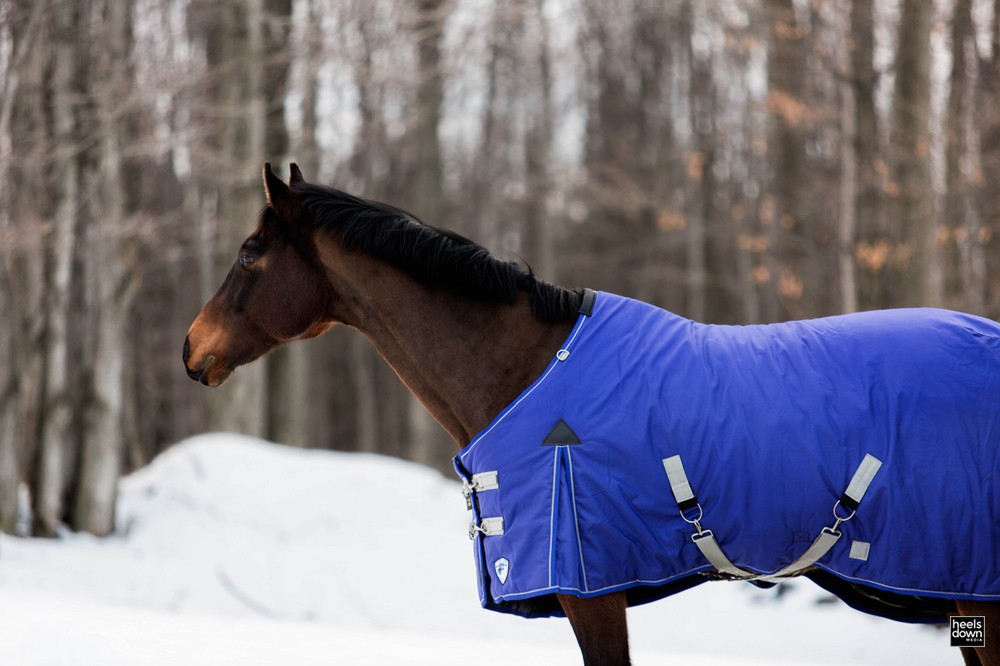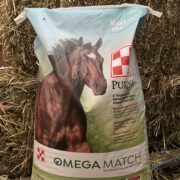Pro Tips For Feeding Senior Horses In Winter

Winter is coming. And no matter where you live, that means some nutritional changes for your horses are coming, too.
Hard keepers and senior horses are especially prone to the pasture, forage and temperature changes that come with transitioning from warmer to colder weather. But horse owners should be preparing all of the horses in their herds this time of year for the winter months.
Heels Down spoke with Dr. Kelly Vineyard, a Senior Nutritionist on the Equine Technical Solutions Team at Purina Animal Nutrition. She’s a horse owner herself – with USDF bronze and silver medals in dressage – and holds a Master’s and Doctoral degrees in equine nutrition from the University of Florida. Her work has been published the Journal of Animal Science, the Journal of Equine Veterinary Science and in a chapter of the textbook, Equine Applied and Clinical Nutrition.

Here are her tips on how to prepare for the winter season.
What should horse owners be thinking about now as we prepare for winter?
It’s important for horse owners to be aware that a lot of things change this time of year. The biggest change, generally speaking, is for horses who are transitioning from pasture during the warmer months to a more hay-based diet in winter. That is a dramatic shift in the diet. Grass is about 80% water and hay is just 10% water, which is a huge change in moisture content for horses. Hay types also vary, so the kind of hay you feed will have different levels of protein, carbs and fiber than the grass they may be used to from earlier seasons.
Is there anything specific horse owners should be paying attention to for their horses who may be sensitive to changes in forage?
In warmer parts of the country, we have grasses like bahia and coastal bermuda. These types of grasses do not store carbohydrates as fructans. But cool season grasses – brome, orchard, and timothy – found in colder places store sugars as fructans. This can be a problem for horses prone to laminitis. The sugar levels stored in grass drop late at night, after midnight. So if you have a horse that is sensitive, it’s best to graze when it’s late and dark (forage experts say after 2-3 a.m.), after the grass has metabolized its stored sugars.
Another major time of stress for pasture is when it frosts. After frost or hard freeze, the pasture is considered “stressed,” which can lead to an increase in stored sugars and become a problem for laminitic-prone horses. You may try to keep them off pasture for several days after a frost.
What’s the best way to store hay through the winter?
The golden rule of storing hay is to never store it on the ground. That leads to moisture in the bottom row of hay. I’ve seen people use pallets, tires and railroad ties to keep their hay off the ground and allow the air to circulate. When you stack hay, it’s important to leave a couple of feet at the top to aid in air circulation, too.
Keeping hay safe from the elements, like exposure to rain, moisture and sunlight, will help it last for longer and maintain its quality.
What about hard keepers or senior horses?
Horses should have their teeth checked at least once a year, of course. And owners should notice any changes in the way their horses eat. If they are having trouble chewing or are quidding their hay, that may mean they are in need of a hay replacer or complete feed, like Purina® Equine Senior® horse feed. Complete feeds and pelleted hay replacers have hay built-in and are easier for them to chew.
This time of year when it’s cold, horses are relying on hay (as opposed to pasture) for most of their forage calories. So if they can’t easily eat long-stem hay, they may need to eat 1.5% of their body weight or more hay replacer or complete feed per day (that’s 15 pounds for a 1,000-pound horse). It’s easy for these guys to drop weight if they can’t eat hay, so make sure their forage needs are being met.
Something else to keep in mind with hard keepers or senior horses is keeping them warm. That may mean blanketing them, but more often it means feeding them enough hay. The extra stress of low temperatures requires more calories for horses to keep their bodies warm. For every 10 degrees below 30F, they need 15% more calories per day.
What are some of the most common myths you see about winter horse care?
Speaking of blanketing – a horse’s thermo-neutral zone is different from humans. If you’re cold, it doesn’t necessarily mean your horse is cold. Over-blanketing is just as big of a problem as under- blanketing, especially for horses kept in a barn and not exposed to the elements.
Another myth I used to hear is that you should feed corn in the winter, because it is a “heating feed”. It’s actually the opposite, and feeding corn can cause other problems. You should feed horses hay to keep them warm, not corn.


